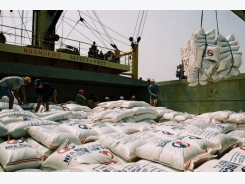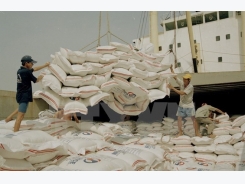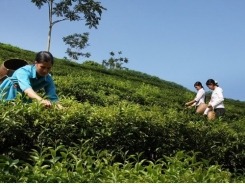Fruit and vegetable imports push Vietnam in deeper trade deficit with Thailand

While Vietnam’s trade deficit with major economies is the result of large imports of inputs for production, the country’s trade gap with Thailand comes mainly from importing fruit and vegetables, many of which Vietnam can produce.
Significant fruit and vegetable imports from Thailand
According to the Ministry of Industry and Trade, Vietnam posted a trade deficit of US$2.13 billion in the first eight months of 2017, as a result of rising imports of materials and machinery for production from China, the Republic of Korea and the United States. However, part of the trade deficit was contributed to by the import of fruit and vegetables that Vietnam could produce at home.
Take Thailand for example. For years, Vietnam has always run a trade deficit with its largest trading partner in ASEAN. In the eight months through August, Vietnam exported US$3.06 billion worth of goods to Thailand while importing US$6.5 billion. Thailand has now surpassed Japan to become the fourth largest exporter to Vietnam. Vietnam’s main imports from Thailand are consumer electronics, cars and car parts, petroleum products, chemicals, fruit and vegetables.
What is worrying is the fact that Vietnam is importing a massive amount of fruit and vegetables from Thailand, accounting for about 60% of Vietnam’s total fruit and vegetable imports, of which many could be produced domestically, said Le Quoc Phuong, deputy head of the MOIT’s Industry and Trade Information Centre.
He explained that compared with their Vietnamese counterparts, Thailand’s fruit and vegetables are better in quality and lower in prices. In addition, Thailand’s fruit and vegetables and Thai goods in general are bolstered by a strong retail network in Vietnam such as BigC and Metro, all of which are owned by Thai firms. In addition, Thai enterprises have held numerous trade fairs to promote Thai goods even to traditional markets, making Thai fruit and vegetables present in almost all markets near residential areas in Vietnam, Phuong added.
As Thai fruit and vegetables have quickly won Vietnamese consumers’ favour, Vietnamese enterprises have increased imports from this country with advantages in terms of geographical proximity, quality and prices.
Besides fruit for personal consumption, Vietnam has also increased the importing of Thai fruit to process and then export to other countries, especially the longan and durian, helping to raise overall fruit and vegetable imports from this market.
Enhancing domestic quality
According to the roadmap of the ASEAN Trade in Goods Agreement, car import tariffs from ASEAN countries will drop to 30% in 2017 and 0% in 2018. Therefore it is projected that Vietnam’s car imports from Thailand will increase and the Southeast Asian country will continue to be the largest provider of completely constructed cars for Vietnam, creating even more pressure on Vietnam’s trade deficit with Thailand.
At the same time, tariff cut pledges within the ASEAN Economic Community will give an advantage to Thailand’s fruit and vegetables. However it is impossible to restrict Thai imports in a short time due to the fact that Vietnam’s fruit and vegetables are not competitive enough. Therefore, Vietnam’s trade deficit with Thailand is forecasted to reach US$6-7 billion, higher than last year’s US$5.2 billion.
Phuong said that in regards to modern trade, the import of fruit and vegetables is nothing unusual, but it would be abnormal if Vietnam imports too much of the goods that could be entirely produced at home and this requires the attention of regulators.
However, restricting imports with a ban is out of the question. The only solution is to enhance the competitiveness of Vietnamese goods in terms of both quality and price. Fruit and vegetables must be produced in a safe and clean process. At the same time, trade promotion strategies need to be changed so that Vietnamese goods become better known in the Thai market, thereby increasing exports and reducing the pressure on the trade deficit.
Related news
Tools

Phối trộn thức ăn chăn nuôi

Pha dung dịch thủy canh

Định mức cho tôm ăn

Phối trộn phân bón NPK

Xác định tỷ lệ tôm sống

Chuyển đổi đơn vị phân bón

Xác định công suất sục khí

Chuyển đổi đơn vị tôm

Tính diện tích nhà kính

Tính thể tích ao



 Rice exports up significantly
Rice exports up significantly  Vietnamese tea seeks to enter choosy markets
Vietnamese tea seeks to enter choosy markets